-
Maintenence workshop activities after World War II.
-
-
After rebuilding the destroyed cars in W. W. II. the tram company couldn't
buy new cars. That's why after 1945 the workshops must have make extra
effort to keep the level of the trams. In 1945 the Buda-workshop was named
from its matyr worker: Árpád Füzesi . The Pest-workshop
become György Dózsa-wokshop. There was an empty depot in North-Buda
called Pálffy-depot. It also become workshop by 1948, but later
here was the workshop of the trolley-buses (wich was in the same company
as the trams). We should mention, that on the Buda side of the city (on
the right bank of the river Danube) wasn't any trolley-bus line since 1945:
so the trolley-buses had to be pulled through a long bridge with a lorry.
In 1962 the company formed another workshop for the freshly bought UV type
multiple unit cars (wich are still in use today).
-
In 1968 the united transportation company was formed called BKV - Budapest
Traffic Company. In 1972 was built the Main Railcar Workshop, where all
sorts of railcars (underground, local railcars, trams) are repaired. So
the smaller workshops (Dózsa-wokshop, and UV-workshop) were closed,
but the Füzesi workshop works today with only less intensity.
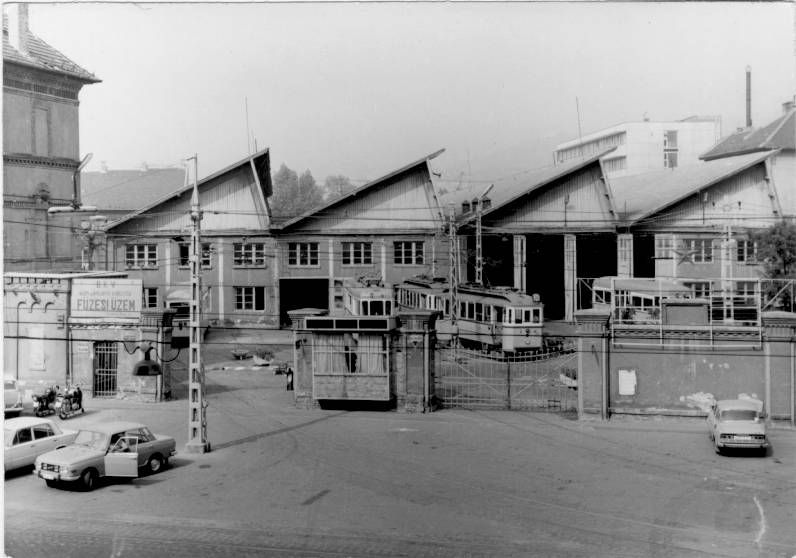
Füzesi-workshop in the '70s
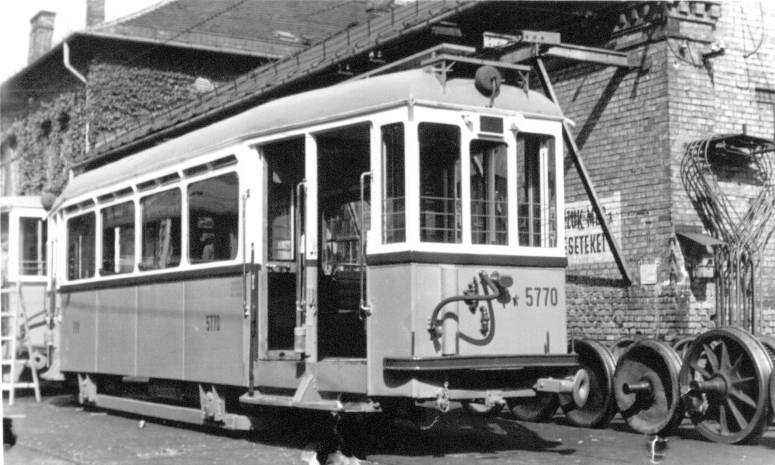

-
Dózsa-workshop
UV-workshop
-
-
Second lanes on the trailers: after the war more trailers were rebuilt
with second entrance lane, but the motored cars remained with single entrance.
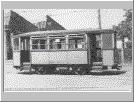 ->
-> A BKVT R3 type trailer - one window on the first picture
is replaced by a wooden board. That's because of the glass shortage.
A BKVT R3 type trailer - one window on the first picture
is replaced by a wooden board. That's because of the glass shortage.
-
Twin cars: as the number of the lines increased, there were more
termini without loops. So they had to make more twin cars, by the conception
of the pre-world-war twin car types. We can see such tram also in Miskolc
- that was the BKVT
N type car from Budapest.
 ->
-> A BKVT S type car.
A BKVT S type car.
 ->
->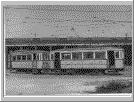 A BVVV L type car.
A BVVV L type car.
-
Steel body: the cars were originally steel underframe with wooden
body. These were extremly dangerous in an accident, because the wooden
body could break and stab the people. After the Budapest Local Railways
(BHÉV) started a program to build steel bodies - the tram company
in 1956 also started to produce uniform steel body for the different car
types. The rebuilding was in the Füzesi-workshop; although the only
experimental car wich was rebuilt with doubled entrance ran without problems,
all the other types were made with single entry.
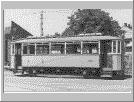 ->
-> A Budapest Street Railway Co. - BKVT's V type motored cars.
A Budapest Street Railway Co. - BKVT's V type motored cars.
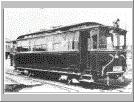 ->
-> The BKVT and a small company around Budapest - called Budapest-environs
Electric Street Railway (BVKV) shared the same F1
type car, wich achieved a body similar with the V type, though their original
body were quite different. On the first picture we see a BVKV's car, wich
was in the '30s in the property of the BHÉV (Budapest Local Railways).
The Miskolc 40-type
car also became similar steel body.
The BKVT and a small company around Budapest - called Budapest-environs
Electric Street Railway (BVKV) shared the same F1
type car, wich achieved a body similar with the V type, though their original
body were quite different. On the first picture we see a BVKV's car, wich
was in the '30s in the property of the BHÉV (Budapest Local Railways).
The Miskolc 40-type
car also became similar steel body.
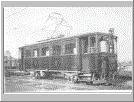 ->
->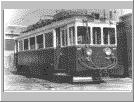 A BHÉV M III type EMU. Part of the BHÉV's stock was rebuilt
at the Füzesi-workshop with wider, telescopic doors.
A BHÉV M III type EMU. Part of the BHÉV's stock was rebuilt
at the Füzesi-workshop with wider, telescopic doors.
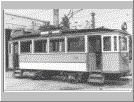 ->
-> A Budapest Electric City Railways - BVVV's H type car in the '30s and late
'50s. The four-window steel body was mainly used on the BVVV types.
A Budapest Electric City Railways - BVVV's H type car in the '30s and late
'50s. The four-window steel body was mainly used on the BVVV types.
 ->
-> A BVVV O type trailer. There were different forms of steel body in use
on this type.
A BVVV O type trailer. There were different forms of steel body in use
on this type.
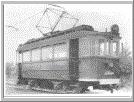 ->
->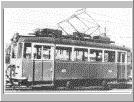 A Budapest-Újpest-Rákospalota Electric Street Railway's (BURV)
motored cars were by this time on the BHÉV lines. The only car that
got steel body had a broken underframe - and this car become the only one
with double entrance doors.
A Budapest-Újpest-Rákospalota Electric Street Railway's (BURV)
motored cars were by this time on the BHÉV lines. The only car that
got steel body had a broken underframe - and this car become the only one
with double entrance doors.
-
UV trailers: after 1956 are the UV type multiple unit cars in use.
The experiments showed, that if they couple a middle trailer in the UV
trainset, the good acceleration of the car doesn't change, so they decided
to buy new trailers. But the company didn't have enough money - so they
started to apply the multiple unit devices (EMU coupling, telescopic remote
doors, ...) on the EP type of trailers, wich were produced between 1939
and 1952.
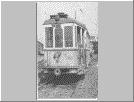 ->
->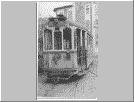 ->
->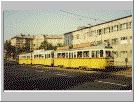 Since the trailers got in use in a hurry, so the Füzesi-workshop first
applied the important devices for the trainsets, and the telescopic doors
were rebuilt only later. (The 5975-5993 trailers were produced by the Füzesi-workshop
between 1951-52, by the sample of the trailer from 1939 made in Gyõr
- because by this time all the coach-factories in Hungary produced cars
to the Sowiet Union for war-compensation. The other 175 similar EP trailer's
electric devices were also supplied by Füzesi-workshop.)
Since the trailers got in use in a hurry, so the Füzesi-workshop first
applied the important devices for the trainsets, and the telescopic doors
were rebuilt only later. (The 5975-5993 trailers were produced by the Füzesi-workshop
between 1951-52, by the sample of the trailer from 1939 made in Gyõr
- because by this time all the coach-factories in Hungary produced cars
to the Sowiet Union for war-compensation. The other 175 similar EP trailer's
electric devices were also supplied by Füzesi-workshop.)
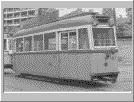 In 1956 revolution there was a trailer, that was damaged so badly, that
the Füzesi-workshop rebuilt after the plans of the not-ordered UV
type trailers - wich carried the form of the UV motored cars.
In 1956 revolution there was a trailer, that was damaged so badly, that
the Füzesi-workshop rebuilt after the plans of the not-ordered UV
type trailers - wich carried the form of the UV motored cars.
-
New types:
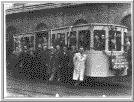 ->
->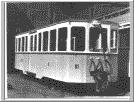 The traffic of the millenium
underground line was increasing, so they built a driving-trailer for
the cars. One of the motored cars driver-cab was taken off, and built in
the new trailer. Notice the extreme low construction - the overhead wires
are only 2.2m high in the tunnel!
The traffic of the millenium
underground line was increasing, so they built a driving-trailer for
the cars. One of the motored cars driver-cab was taken off, and built in
the new trailer. Notice the extreme low construction - the overhead wires
are only 2.2m high in the tunnel!
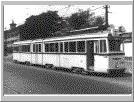 The Füzesi-workshop started a program to produce articulated trains.
They tried to construct a train form the newly bought UV motorcars in 1962.
It became a fiasko: because, from two trucks the motors were removed -
the cars accelerated very badly, and often were burnings in the remaining
motors. Furthermore on the Budapest lines could work only with caution,
it had to avoid curves under 20m of radius, because the body parts touched
each other. In the end this car was rebuilt back to single cars in 1966.
The Füzesi-workshop started a program to produce articulated trains.
They tried to construct a train form the newly bought UV motorcars in 1962.
It became a fiasko: because, from two trucks the motors were removed -
the cars accelerated very badly, and often were burnings in the remaining
motors. Furthermore on the Budapest lines could work only with caution,
it had to avoid curves under 20m of radius, because the body parts touched
each other. In the end this car was rebuilt back to single cars in 1966.

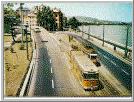 The Füzesi-workshop started in 1961 to produce its own type of articulated
car, after examples from abroad. It became the standard electric supply
of the old car types, so only two axles were motored. Since that the heavy
cars could accelerate slowly only. The first series of the articulated
car had only one driver-cab and doors only on one side. This caused problems
on the Budapest lines, since there are tram-stops with loading islands
between the tracks - these lines had to be avoided by these cars. That's
why two years later they made a car with doors on the both sides. In the
other Hungarian cities this car type became common: in Debrecen they were
producing this car until 1979, and they are still
in use.
The Füzesi-workshop started in 1961 to produce its own type of articulated
car, after examples from abroad. It became the standard electric supply
of the old car types, so only two axles were motored. Since that the heavy
cars could accelerate slowly only. The first series of the articulated
car had only one driver-cab and doors only on one side. This caused problems
on the Budapest lines, since there are tram-stops with loading islands
between the tracks - these lines had to be avoided by these cars. That's
why two years later they made a car with doors on the both sides. In the
other Hungarian cities this car type became common: in Debrecen they were
producing this car until 1979, and they are still
in use.
-

-
-
In the end: this articulated "monster" is made and was used in Szeged.
-
-




 ->
->
 ->
->
 ->
->
 ->
->
 ->
->
 ->
->
 ->
->
 ->
->
 ->
->
 ->
-> ->
->

 ->
->



